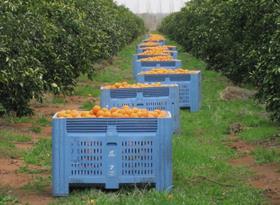
Smaller count sizes haven’t caused widespread panic amongst Australian navel exporters this season.
Demand was high over the early stages of the campaign, with markets seemingly adjusting to smaller fruit.
“For early season navels, sizes have been on average about a count and a half smaller than normal,” says Perry Hill, general manager of Mildura Fruit Company (MFC), a leading exporter based in the key Sunraysia production hub.“Larger fruit markets will be affected as carton volume will be lighter.
“Having said that, our customers in a number of export markets have altered their expectations accordingly and this has allowed MFC to ship smaller sizes than normal. I believe this would also be the case with other exporters.”
The Australian campaign will hit top gear over the next month, as harvests peak across Southern Australia’s three key growing regions – Riverina, Riverland and Sunraysia.
Despite the average fruit size being on the smaller side, forecasts suggest the overall Australian navel crop will be up on last year.
“We’re expecting the main crop, navels, to be up 10 per cent in tonnages this year compared to last year,” Citrus Australia chief executive Judith Damiani told the Weekly Times. “That’s mostly due to a recovery from last year’s lighter crop.”
A late start to the Australian harvest – early season programmes got underway in early May – may also aid export programmes.
“The season start was about ten days later than normal,” Hill adds. “The late start has actually been quite beneficial as it has allowed many of the export markets to clear out of counter seasonal citrus.
“There have been a number of reports coming out of South Africa that their supply of navels will be well down, but on the flipside we understand that their Valencia production will be well up.”
A full version of this article appears in the July/August edition of Asiafruit.



